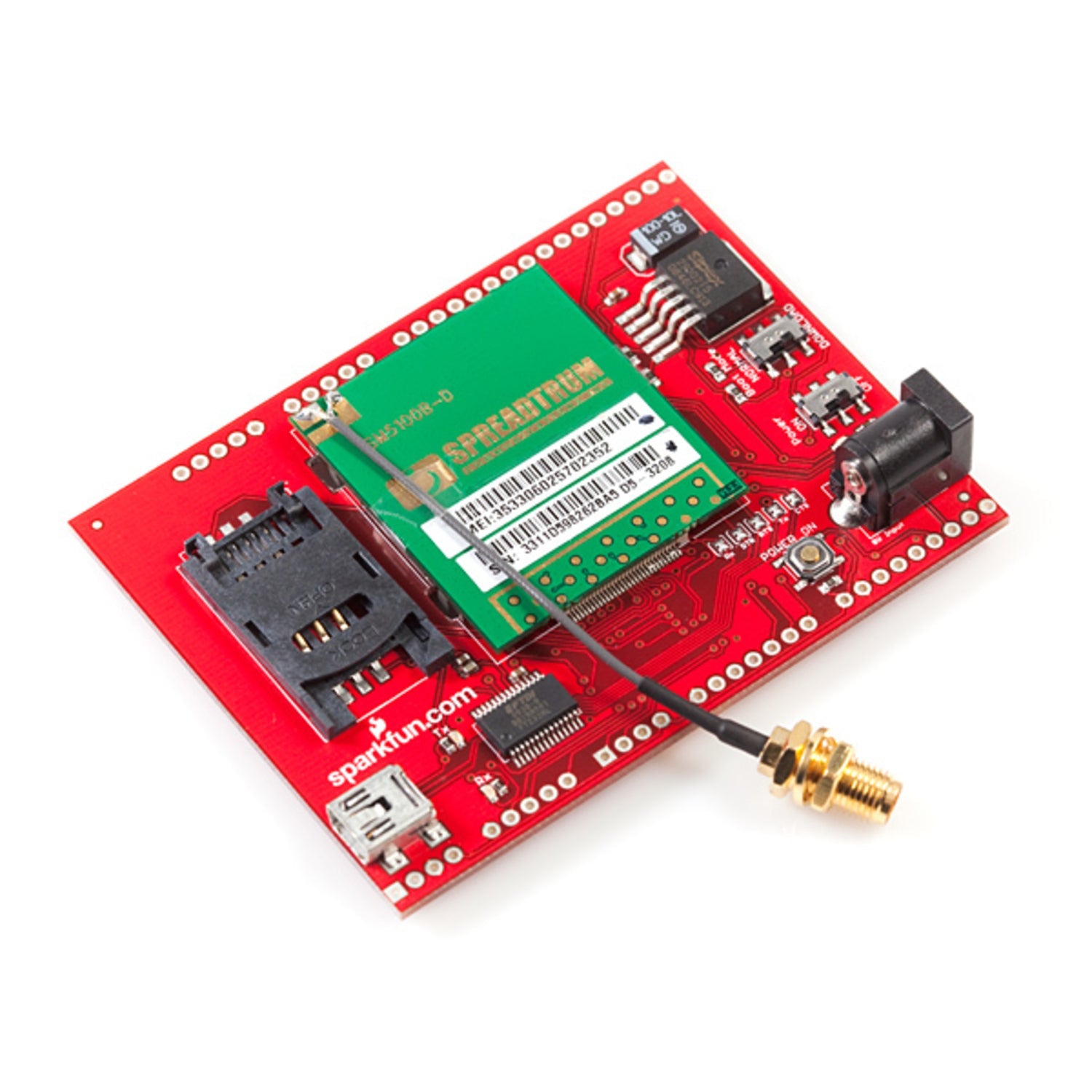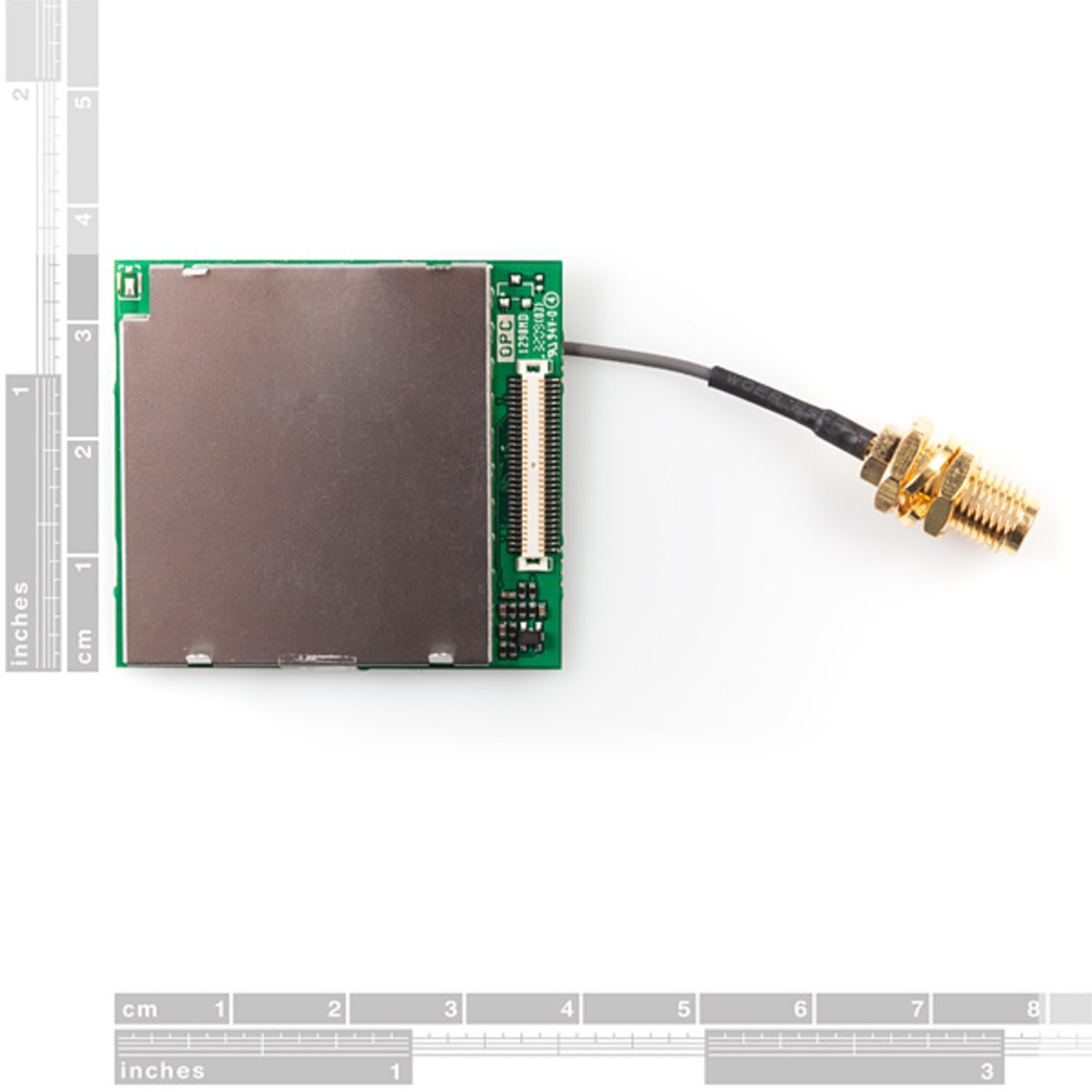The SM5100B is a tiny, quad - band GSM 850/EGSM 900/DCS 1800/PCS 1900 module. It's a great fit for numerous wireless projects. With this module, you can do almost everything a regular cell phone can, such as sending SMS text messages, using GSM/GPRS, and TCP/IP. It has two UARTS, an SPI interface, and two 10 - bit ADCs. It supports Li - ion battery charging, a 4x6 keypad, and an LCD interface. There are inputs/outputs for a speaker and microphone, and an antenna is attached. The power supply for the module should be regulated between 3.3 - 4.2VDC (3.6V nominal). You can connect it to a 60 - pin, surface mount connector or pair it with our SM5100B evaluation board. Since there's no SIM socket on the module, you might want to use our SIM card breakout board. Key features include a temperature range of - 10 - 55°C (operating) and - 40 - 85°C (storage), 60 - pin connection (mating connector sold separately), a power supply range of 3.3V to 4.2V (3.6V typical), and various power consumption levels. It supports 3V/1.8V SIM cards (auto - recognize), has a 4x6 keyboard interface, UART0 and UART1 interfaces, and an LCD interface over SPI. Its dimensions are 35.0 x 39.0 x 2.9mm and it weighs less than 9g. Available documents include User's Manual, Hardware Specification, Reference Schematics, SMS and GPRS Application Notes, AT Command Set, and Arduino Tutorial.



Using the SM5100B module is easy. First, make sure to regulate the power supply between 3.3 - 4.2VDC, with 3.6V being the typical value. You can connect it to a 60 - pin surface mount connector or pair it with the SM5100B evaluation board. Since there's no SIM socket on the module, use our SIM card breakout board. When using it, keep in mind the temperature range. It works best between - 10 and 55°C, and can be stored between - 40 and 85°C. As for power consumption, it varies in different modes. In off mode, it uses less than 100uA, and in communication mode, expect an average of 350mA. For maintenance, keep it in a clean and dry place. Refer to the User's Manual, Hardware Specification, and other available documents if you run into any issues or need more detailed information.